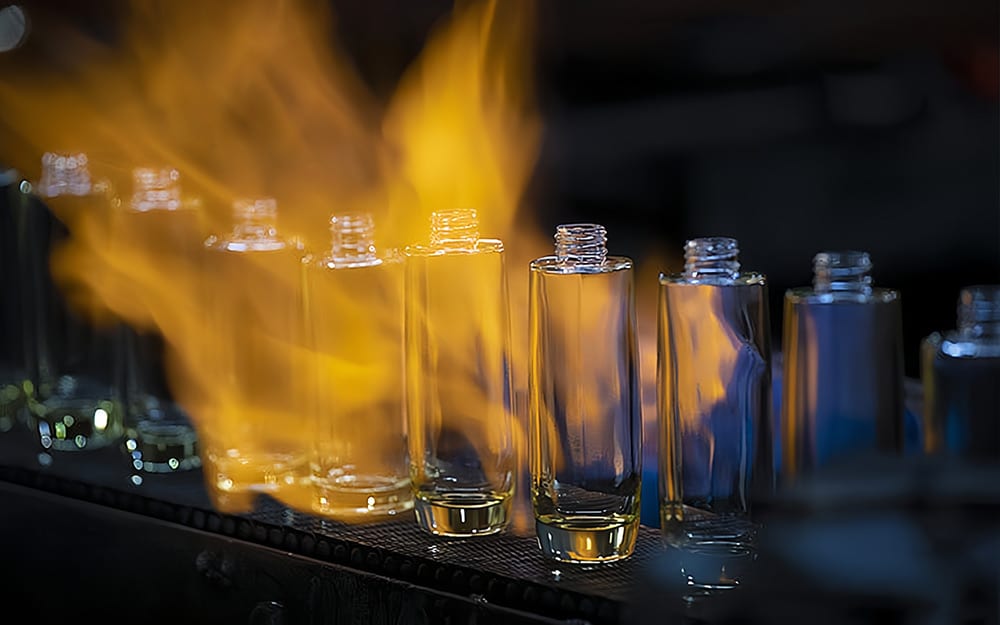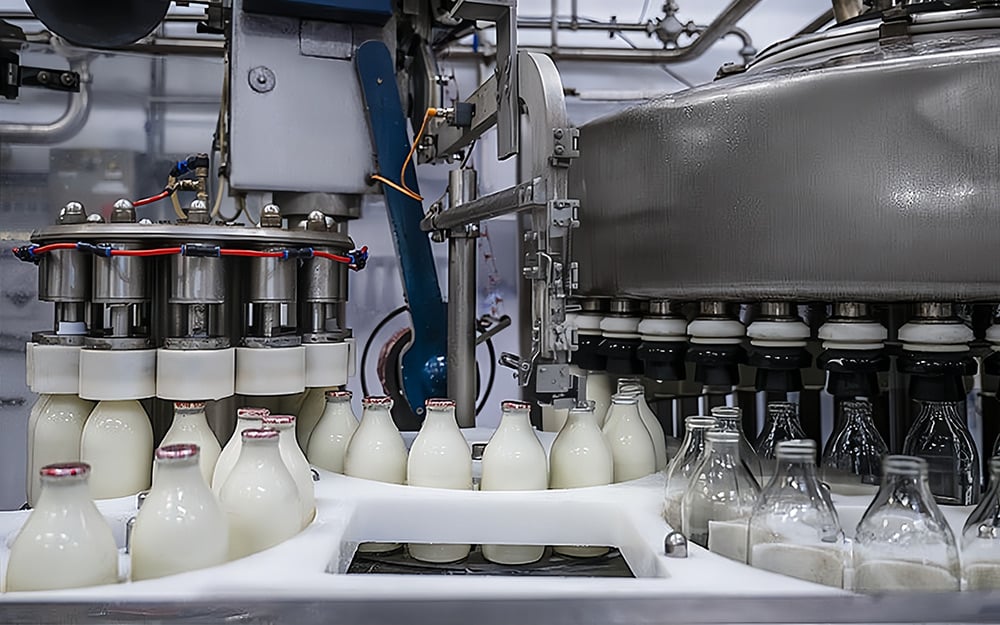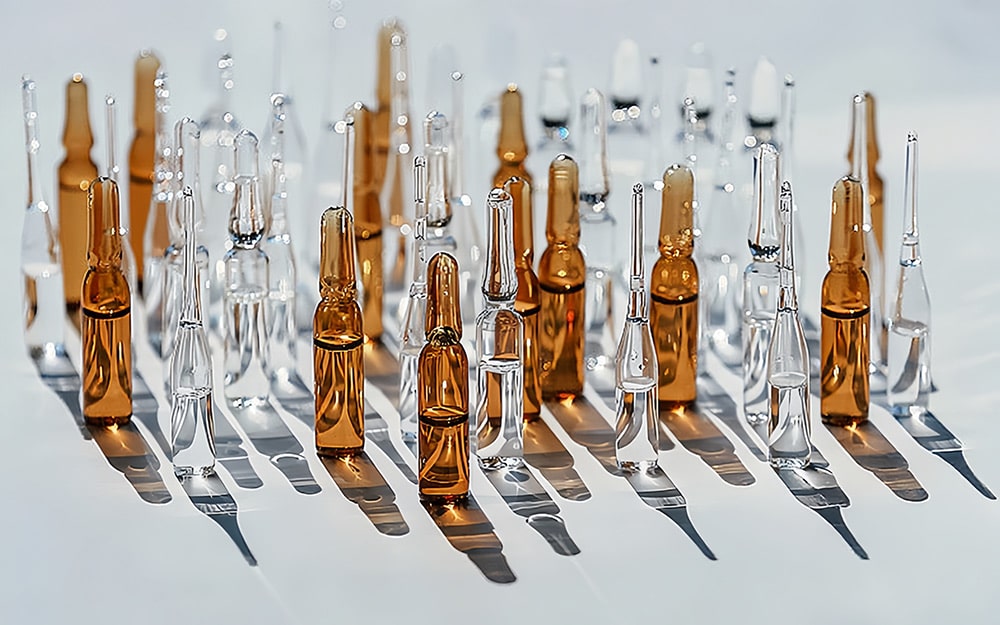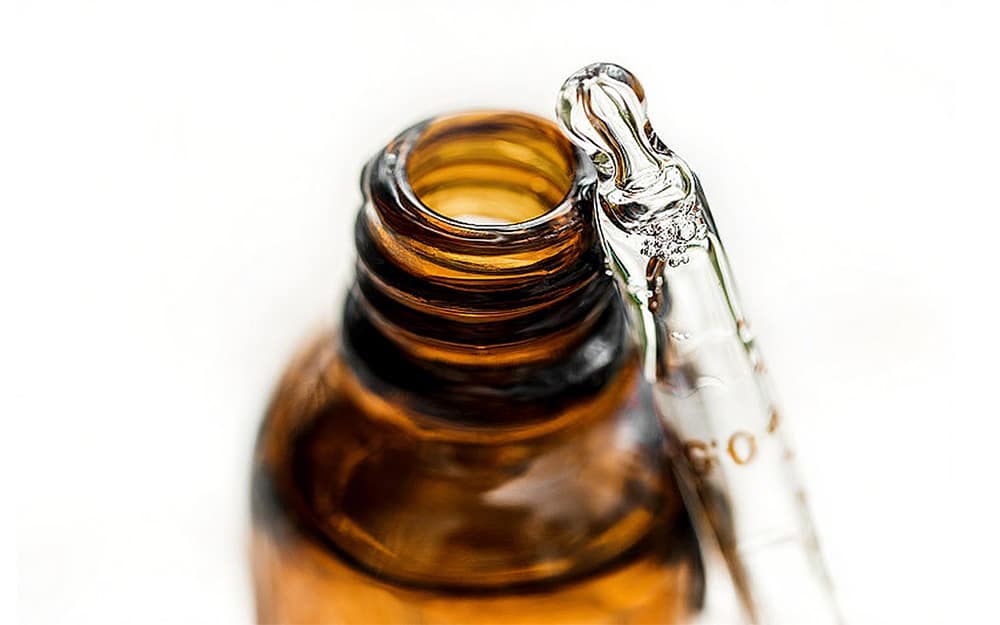—— a sales expert with 20 years of experience in the glass industry
Table of Contents
In the more than 20 years that I have been engaged in the sales of global glass packaging solutions, no matter how new technologies and new products develop and evolve on the market, one phenomenon has remained unchanged – when companies care about product safety, functionality and brand positioning, glass packaging containers are still the first choice for responsible companies.
Glass may seem traditional, and some even say it is old-fashioned, but in strictly regulated industries such as food, pharmaceuticals, and cosmetics, it is never plastic or metal that can truly win trust and balance shelf display and long-term sustainability, but glass.
Whether it is pickles in ordinary flint glass jars, perfumes in frosted crystal glass bottles, soy sauce sealed in tea-colored soy sauce bottles, or vitamin tablets packaged in pharmaceutical grade high white glass capsule bottles, the reason behind these manufacturers’ choice of packaging materials is far more than just “beauty”.

Let’s take a deeper look at the reasons:
Ⅰ. Glass is chemically stable
Unlike various polymers that release chemicals over time, glass is chemically stable. It has excellent inertness and hardly reacts with any acid, base or active ingredient. Especially in scenarios where high chemical resistance is required, borosilicate glass and soda-lime glass have been proven to be the most neutral packaging materials through thousands of years of laboratory and market practice – no precipitation, no odor, and no molecular migration even at high temperatures. Therefore, glass is particularly suitable for vinegar products, high-acid sauces, essential oils, spirits or pH-sensitive medicines.
As we all know, the barrier properties of glass are also its irreplaceable and important advantages.
Today, people talk about alternative materials such as multi-layer plastics and aluminum foil bags, but only glass can truly block oxygen, water vapor, odor and ultraviolet rays naturally.
For food and cosmetic brands that do not want to rely on preservatives to extend shelf life, glass bottles are the first choice.
Even in high humidity and high temperature environments, glass will not deform or absorb odors – this is almost a rigid demand in high-standard markets such as Europe, Japan, and North America.
Ⅱ. Looking at regulations and safety standards, the legality and credibility of glass have long been widely recognized

In the pharmaceutical industry, only type I or type III glass containers can be used for injection or oral drug packaging.
International standards related to the packaging of injections or oral drugs include:
– USP <660> Glass Containers: USP <660> (United States Pharmacopeia 660) is a chapter in the United States Pharmacopeia, titled “Containers—Glass”, which is an important regulatory document specifically used to regulate the quality, composition and performance standards of glass containers used in drugs.
The core purpose of this chapter is to ensure that glass containers do not react chemically with drugs or release harmful substances during the storage and transportation of drugs, so as to ensure the stability, safety and efficacy of drugs.
– EP 3.2.1 “Glass Containers for Pharmaceutical Use” EP (European Pharmacopoeia) 3.2.1 “Glass Containers for Pharmaceutical Use” applies to glass packaging containers that are in direct contact with drugs, including:
-Ampoules, bottles, and vials for injection
-Eye drops, oral liquids, and oral solid preparation containers
-Medicinal bottles and preparation sub-packaging containers
– ISO 719/720 “Glass Hydrolytic Stability Test” is an important test method for evaluating the chemical inertness and hydrolytic stability of glass. It is widely used in fields such as pharmaceutical packaging, food glass containers, and cosmetic glass bottles that require extremely high material stability. The core goal of the test is to determine the ability of glass to release soluble alkaline ions under the action of high-temperature pure water, reflecting the hydrolytic stability of the glass (Hydrolytic Resistance). The less the amount of acid required for titration at the end of the test, the more stable the glass.
In terms of food packaging, FDA 21 CFR and EU EC 1935/2004 both recognize glass as a recognized food contact safety material. The cosmetics industry also relies on ISO 22716 and various cleanliness standards. Many high-end brands prefer to use glass to reflect their concept of “no additives, traceability, safety and controllability”.
Ⅲ: From a commercial perspective, glass gives brands great freedom and recognition in terms of design

Personalized engraving and embossing for custom logo of the brand, glass bottle color matching with the brand basic color scheme,the surface frosting has achieved a low-key and elegant appearance, bottle body hot stamping and printing, internal spraying and other processes all make glass bottles the best carrier for brand building – this kind of visual effect directly improves the terminal sales conversion rate.
The reason why global first-line brands such as SK-II, Chanel, Heinz, and Absolut insist on using glass is not only because it is beautiful, but also because it conveys reliable, high-end, and orthodox signals.
A European beverage customer once said frankly: “If we switch to plastic bottles, the price of the product will immediately drop by more than 40%.” We have heard too many such words, and behind them is the natural trust that consumers have established in glass materials.
Ⅳ. Glass also has absolute advantages in production and process adaptability
For hot processing processes such as hot filling, pasteurization, steam sterilization, and high-pressure sterilization, some customers require high-temperature sterilization at 120 degrees for at least 30 minutes for their caviar packaging . These commonly used sterilization processes require packaging materials to have extremely high thermal stability. Glass, especially high borosilicate glass, is the only non-metallic material that can withstand these processes for a long time.
For example, high-end sauce brands in Japan and South Korea are hot-filled at temperatures above 85°C. If plastic is used for such products, it is very easy to deform and affect the flavor of the sauce. Only glass can ensure long-term sealing and shelf safety.
Ⅴ. In terms of environment and sustainability, glass is a model of circular economy

According to FEVE’s 2022 Sustainability Report, the average recycling rate of glass packaging in Europe has been stable at 76-79% (79% in 2021), with Belgium, Switzerland and other countries exceeding 95%. The inclusion rate of broken glass in new bottle production is directly related to the recycling rate, and the industry generally reaches more than 80%. Every 10% increase in the proportion of recycled glass can reduce the energy consumption of the melting furnace by about 2.5%, while reducing carbon dioxide emissions by about 5%.
France, Germany, Spain and Italy have all taken the lead in implementing closed-loop glass recycling projects. In these countries, beer bottles can be reused up to 50 times before being remelted. China’s recycling rate is still growing, at about 50%, and the government aims to reach 70% by 2030. Our partners in Europe, Southeast Asia and the Middle East are increasingly consulting on recycling rates and lightweight bottle innovations. Recycling is now not only a policy, but also a purchasing preference.
Waste glass can be 100% recycled and reused without degradation or degradation, with high melting efficiency and no residual pollution.The European Environment Agency (EEA) confirms that glass is a “permanent material” with no degradation in closed-loop recycling, and that the utilization rate of broken glass is linearly related to carbon emission reduction. The European Commission’s Circular Economy Action Plan lists glass as a model of high recycling rate and supports its “bottle-to-bottle” recycling model. In the mean time, the recycling rate of plastic is only 35% (European Environment Agency 2022), and most of them are downgraded to low-value products.
According to the survey: 68% of European consumers are willing to pay a 10% premium for environmentally friendly packaging (Eurobarometer 2023), and the “pure” and “high-end” perception of glass fits the trend of healthy consumption.
The EU “Packaging and Packaging Waste Regulation” (PPWR) requires that all packaging must contain 65% recycled materials by 2030. The current compliance rate of glass is much higher than that of plastic (25%).
Therefore, for the long-term sustainable development of enterprises, glass packaging is still the first choice for many high-end brands.There are also corresponding benchmarks for global glass recycling.
Ⅵ. The evolution of lightweight and smart glass

In addition to the perfect environmental performance of glass packaging bottles in terms of recycling, glass bottles are also undergoing a revolution in the field of energy conservation and emission reduction: the evolution of lightweight and smart glass.
In the past, glass was accused of being bulky and fragile. Today? No longer. Advances in lightweight bottle design, smart molding technology and annealing optimization have made bottles 15-40% lighter than ten years ago, without any loss of strength, fully capable of the current highest-speed beer filling, red wine filling lines, etc.
At Newray, in order to reduce energy consumption and increase the use of environmentally friendly and recycled glass, we imported the most advanced production lines from Japan, Italy, and Germany, combined with advanced technologies in China, optimized production technology, reduced material use by up to 28%, and passed the 1-meter drop test. After reducing the gram weight, all new products need to be sampled for filling tests, and pressure resistance and impact tests are performed on the production line.
The following cases are weight reduction solutions we have provided to customers around the world in the past two years:
Newray Glass Bottle Lightweight Cases | ||||||
| Country | Category | Capacity | Original weight | Weight after reduction | Reduce weight percentage |
1 | Senegal | Glass Yogurt Bottle | 143 | 125 | 75 | 40% |
2 | Poland | Glass Candle Jars | 540 | 500 | 320 | 36% |
3 | India | Glass Spice Jar | 100 | 120 | 100 | 17% |
4 | Turkey | Glass Grinder Jar | 180 | 200 | 162 | 19% |
5 | Italy | Glass Wine Bottle | 1000 | 520 | 450 | 13% |
6 | Mexico | Glass Coffee Jar | 440 | 255 | 215 | 16% |
7 | Mexico | Glass Coffee Jar | 880 | 425 | 355 | 16% |
8 | Austrilia | Glass Jam Jar | 1050 | 460 | 390 | 15% |
9 | Pakistan | Glass Jam Jar | 750 | 410 | 370 | 10% |
Ⅶ. Various outer packaging applications of glass bottles cover various industries in depth

Today, glass bottles and glass jars play a role that other containers cannot replace – whether in the field of medicine, natural cosmetics or food.
Applications | Glass container types | Reasons to use |
Wide-mouth baby food jars | No chemical migration | steam sterilizable |
Dark glass olive oil bottles (green/amber) | UV protection | freshness |
Dropper bottles for serums and skincare | vacuum jars | Inert, elegant, well-sealed |
Beer and kombucha: | Returnable bottles | Reusable, pressure-resistant, retains carbonation |
Herbal extracts | Borosilicate bottles | High purity dose protection |
Ⅷ. Summary: Why customers still choose glass
In two decades of communication with customers all over the world, one thing remains constant: when customers demand purity, performance and credibility, they still default to glass. Newray has worked with food labs, cosmetic startups, multinational alcohol brands, and health product pioneers. They all believe that glass reflects not only the quality of the product itself, but also the quality of the brand itself, and this is supported by data and market feedback, and we have good reason to say so. When shelf life is critical, when brands need to establish a connection, when consumers must trust the packaging as much as the product, there is only one choice, and that is glass.
Ⅸ. Let us build your brand with glass
Newray has 50 years of experience in glass packaging. With our in-house design team, mold customization capabilities and global logistics support, we help customers in more than 120 countries provide world-class glass packaging. Contact us to discuss OEM/ODM project samples or custom mold designs, and explore our range of glass jars, essential oil bottles, perfume bottles and medicine bottles. Our team is ready to transform your ideas into safe, market-trusted, sustainable glass packaging that will stand the test of time.

